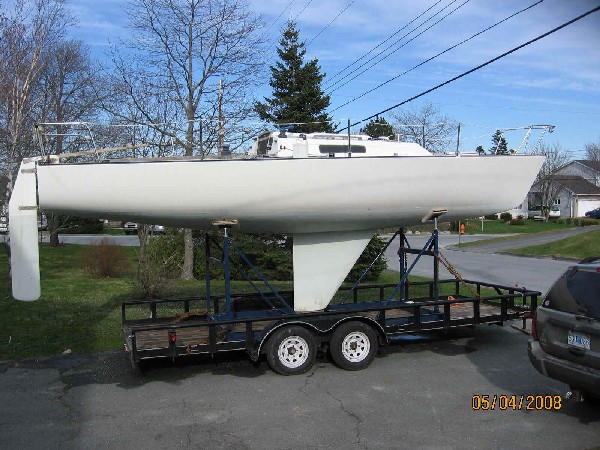
Complete Bottom Job
I have often been amazed when I hear of boaters discussing estimates for a "bottom job". Usually these are owners who have their boats in the water year round and haul once every two to three years to have the bottom "done". For those of us in Northern climes where boats are hauled annually applying a fresh coat of antifouling paint each Spring is an afternoon job often done by the owner. Costs are typically just the price of the antifouling paint, a couple rollers and some masking tape. It is not a big job.
Then there are the other bottom jobs. These are on boats that have simply applied antifouling paint year after year over the old paint with little prep. In these cases the paint looks layered and often flaking. The question of what lies beneath and hull condition also worms its way into an owners consciousness. Such was the case on Nut Case.
Boat before from a distance looks good.

Closer inspection reveals a different story
The paint looks layered and slow. Obvious need of a cleanup.

The above closeup shots really show the problem.
Looking at the paint up close we can easily see why this bottom would be slow. On top of that all the various surfaces and cracks in the paint will be great places for growth. The only solution is to strip the hull beneath the waterline to the gelcoat and then apply new barrier coat and antifouling. The new surface will be smooth and much faster.
The job of stripping the bottom is very simple. The fast and expensive way is to hire someone to sand blast, soda blast or even dry ice blast the hull to remove the old layers. Problems with this are cost, sand/soda residue and possible damage to the underlying gelcoat if not done carefully. The less expensive method is to scrape by hand and sand off remaining residue.
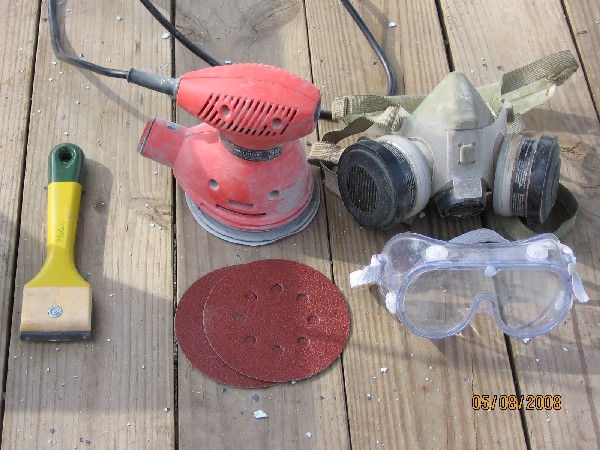
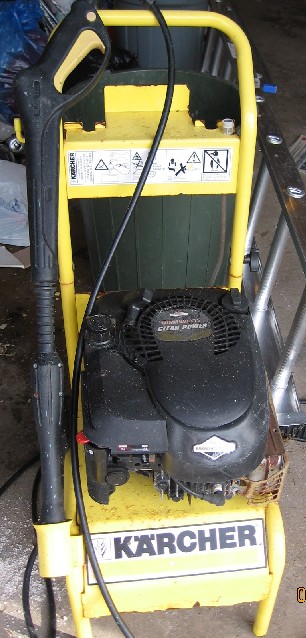

Tools: Paint scraper, orbital sander, safety goggles, respirator and pressure washer
I started off using an electric 1600psi pressure washer to remove some of the old ablative paint and the areas where the paint was loose. This worked well but I decided a 2000psi gas pressure washer might be a bit better. Both removed a lot of the loose paint and reduced the level of scraping effort.
A caution with paint scrapers - the corners can dig grooves into gelcoat. I used an angle grinder to round the corners before scraping. After using the pressure washer to remove as much loose material as possible I then changed into dry work clothes and used the scraper to remove paint and barrier coat. After clearing an area I would use the sander with 120 grit paper to remove the last of the residue and leave a smooth gelcoat surface.
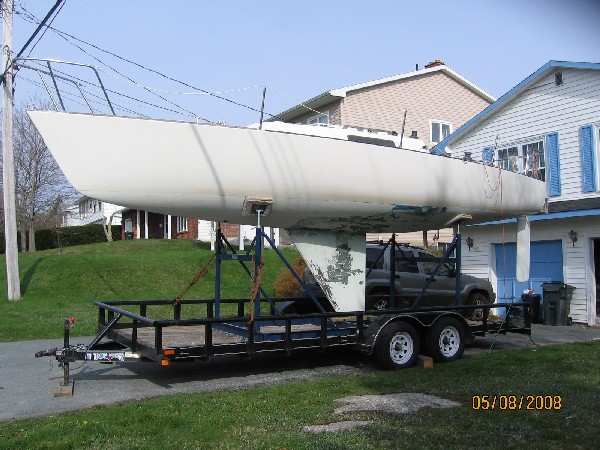
In the above picture the hull is stripped forward of the keel. The keel and keel area have been pressure washed and the area aft of the keel has not been started.
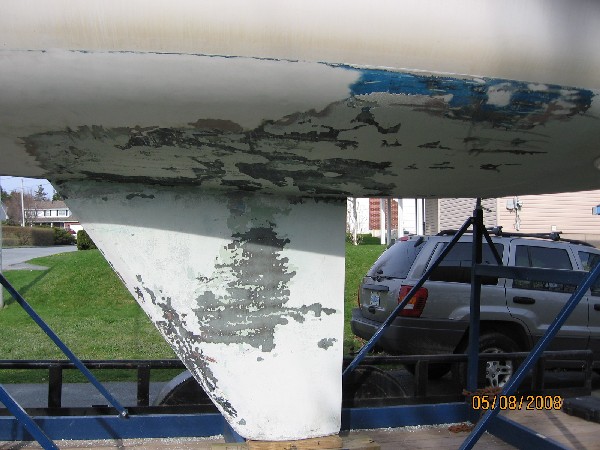
After Pressure washing above & below

Finally after 8 hours with pressure washer, 6 hours scraping and 3 hours sanding the Port side of the hull is clean. Note that the starbord still requires scrape and sand and that the keel has not yet been cleaned. Not an easy job on my body but well worth the effort!
The good news is that after removing the paint and various barrier coats the underlying hull is in excellent condition. This hull has been sanded before as evidenced by the scratch marks I cleaned off the gelcoat once the paint was removed. These appear to be from Random Orbital sander with 80 grit paper and by scrapers. This also dates the barrier coat at probably 8 - 12 years old based on previous sales of the boat. All in all a good sign.
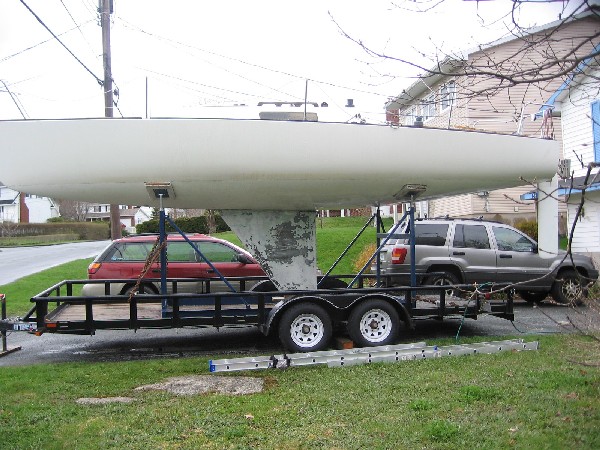
Port side pressure washed, scraped and sanded with 120 grit.

Contrast - Port stripped, Stbd not
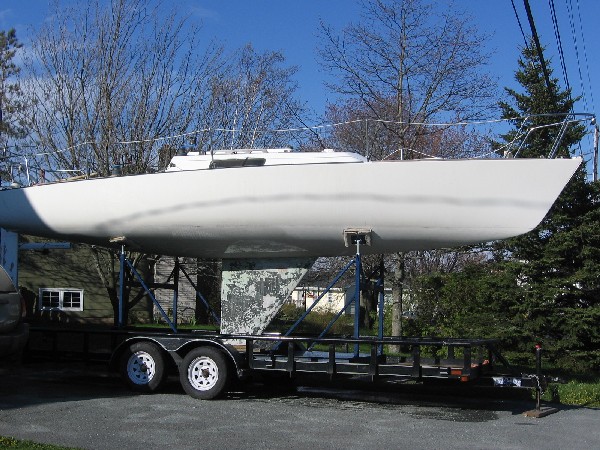
Bottom stripped - except under pads

Time to work on keel - after waterblasting
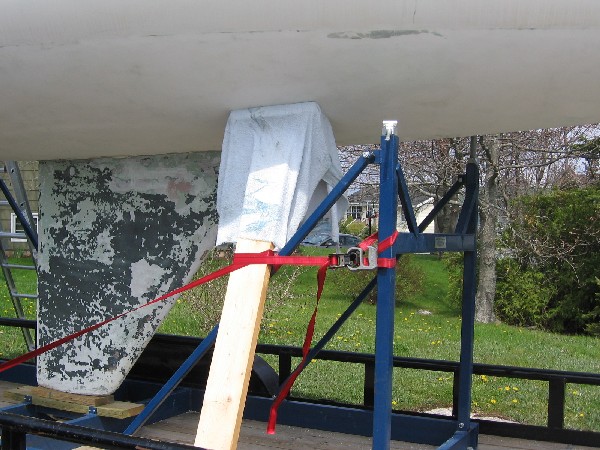
Stbd forward pad has been lowered & removed. A 2x6 post braces Stbd side. Under the old pad the remaining old paint and barrier coat has been removed. Following this Interprotect 2000E barrier coat was applied and then VC Offshore Antifouling Paint. All that is left is to repeat on remaining three pads, scrape and sand keel and then apply barrier coat to entire hull and keel.
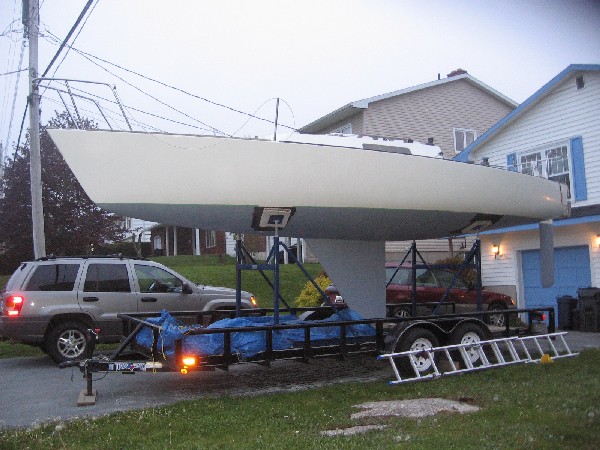
Barrier Coat applied. Pads have all been lowered, barrier coated and have VC Offshore AF
